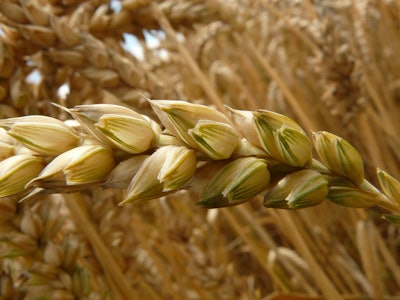
Strong export demand will cut into already tight U.S. supplies of corn and soybeans by more than previously forecast, the USDA reported Tuesday in its latest World Agricultural Supply and Demand Estimates (WASDE).
WHEAT:The supply and demand outlook for 2020/21 U.S. wheat is largely unchanged this month but there are offsetting by-class changes to exports, imports and food use. Hard Red Spring (HRS) and White exports are raised on stronger than expected sales and shipments, particularly to China. Conversely, Hard Red Winter (HRW) exports are reduced on a continued slow pace. Durum imports are raised on the pace to date while HRS is lowered. Durum and HRS food use are raised while HRW and Soft Red Winter are lowered. These changes are mainly based on the NASS Flour Millings Products report and Census trade data. The season-average farm price is raised $0.15 per bushel to $5.00 based on NASS prices reported to date and expectations for futures and cash prices for the remainder of the marketing year.
The 2020/21 global wheat outlook is for greater supplies, increased consumption, higher exports, and reduced stocks. Supplies are raised 0.8 million tons to 1,073.5 million. Global production is increased to a record 773.4 million tons as higher production in Kazakhstan more than offsets reduced production in Pakistan and Argentina. World 2020/21 consumption is increased 9.8 million tons to 769.3 million, mostly on higher feed and residual use for China and increased food, seed, and industrial (FSI) use for India.
China’s 2020/21 feed and residual use is raised to a record 30.0 million tons, surpassing the previous 2012/13 record of 26.0 million. China’s domestic corn prices continue to be at a premium to wheat, encouraging greater wheat feed use. Additionally, increased auction volumes of old-crop stocks in China have expanded the availability of feed-quality wheat. India’s FSI is raised 3.5 million tons to a record 96.5 million as government stocks data indicate greater disappearance than previously estimated. This is likely the result of the inclusion of wheat products in India’s government food assistance programs to address economic disruptions caused by COVID-19.
预计2020/21全球贸易提高了1.1毫on tons to 194.8 million tons as higher exports for the EU-27+UK and Kazakhstan more than offset lower exports for Argentina. EU-27+UK exports are raised on a strong export pace and improved price competitiveness with Russia. Kazakhstan exports are increased on its pace to date and greater exportable supplies. Argentina’s are lowered on reduced supplies and a slow export pace to date. The largest import change this month is for China, where imports are raised to 10.0 million tons on a continued robust pace. Projected 2020/21 world ending stocks are lowered 9.0 million tons to 304.2 million with most of the reductions due to increased consumption for China and India. However, global stocks remain record high with China and India holding 51 and 9 percent of the total, respectively.
COARSE GRAINS:This month’s 2020/21 U.S. corn outlook is for higher exports and lower ending stocks. Exports are raised 50 million bushels, reflecting historically large corn purchases by China. With no other use changes, U.S. corn ending stocks are lowered 50 million bushels from last month. The season-average corn price received by producers is raised 10 cents to $4.30 per bushel.
Global coarse grain production for 2020/21 is projected marginally higher to 1,438.9 million tons. This month’s foreign coarse grain outlook is for higher production, lower consumption, and greater ending stocks relative to last month. Foreign corn production is up fractionally, with an increase for South Africa more than offsetting a reduction for Paraguay. For South Africa, production is raised based on higher indicated area. For Brazil, the corn production forecast is unchanged as greater area is offset by a reduction in yield. Slow second-crop planting progress in the Center-West dampens yield prospects but very favorable prices boost area expectations.
Major global trade changes for 2020/21 include higher projected corn exports for the United States, India, and South Africa. For 2019/20, Argentina and Brazil corn exports are raised for the local marketing year ending February 2021 based on larger-than expected late-season shipments. Corn imports for 2020/21 are increased for China, with partly offsetting reductions for the EU-27+UK, South Korea, Japan, India, Saudi Arabia, and Turkey. China’s barley and sorghum imports are also higher this month, bringing total coarse grain imports to 40.3 million tons. Foreign corn ending stocks for 2020/21 are up relative to last month, mostly reflecting increases for China, South Africa and Mexico that are partly offset by reductions for Argentina and Brazil. Global corn ending stocks, at 286.5 million tons, are up 2.7 million from last month.
RICE:The outlook for 2020/21 U.S. rice this month is for stable supplies and domestic use, lower exports, and higher ending stocks. Exports are lowered by 1.0 million cwt to 93.0 million, all for long-grain on the continued sluggish pace of sales and shipments for long-grain milled rice. Projected 2020/21 all rice ending stocks are raised by an equivalent amount to 39.4 million cwt. The projected 2020/21 all rice season-average farm price is raised $0.20 per cwt to $13.40 with increases in the NASS prices reported to date and price expectations for the remainder of the marketing year.
The 2020/21 global outlook is for larger supplies, higher consumption, increased trade, and reduced stocks. Rice supplies are raised 0.8 million tons to 682.3 million, primarily on higher rice production for Indonesia, Sri Lanka, and the Philippines as global production is raised to a record high 504.0 million. World 2020/21 consumption is increased 2.2 million tons to a record 504.2 million. The largest increase is for China, where more old-crop rice is expected to be fed due to rising domestic corn prices.
World trade is raised 0.9 million tons to 46.3 million as higher exports by India more than offset reduced exports by Thailand. India’s exports are increased to a record 15.0 million tons as its supplies remain ample and its export prices continue to be the most competitive among major exporters. Projected 2020/21 world ending stocks are lowered 1.4 million tons to 178.1 million, primarily on higher domestic use for China and larger exports for India. WASDE-609-3
OILSEEDS:This month’s 2020/21 U.S. soybean outlook is for increased exports and lower ending stocks. Soybean exports are projected at 2.25 billion bushels, up 20 million from last month reflecting record marketing-year exports through January and a slow start to Brazil’s export season resulting from harvest delays. With crush unchanged, soybean ending stocks are reduced 20 million bushels to 120 million. If realized, soybean ending stocks would be down 77 percent from 2019/20, and the lowest since 2013/14.
The U.S. season-average soybean price for 2020/21 is forecast at $11.15 per bushel, unchanged from last month. The soybean meal price is forecast at $400.00 per short ton, up 10 dollars. The soybean oil price forecast is raised 1.5 cents to 40.0 cents per pound.
全球2020/21大豆供应和需求预测include higher exports and lower ending stocks. Global exports are raised 0.6 million tons to 169.7 million on higher exports from the United States and Russia. Higher imports for Argentina are partially offset by reductions for the EU-27+UK, Canada, and Bangladesh. Global soybean stocks are reduced 1.0 million tons to 83.4 million as lower stocks in the United States and Brazil more than offset higher stocks in Argentina.
For complete WASDE tables and previous month’s reports, clickhere.





















